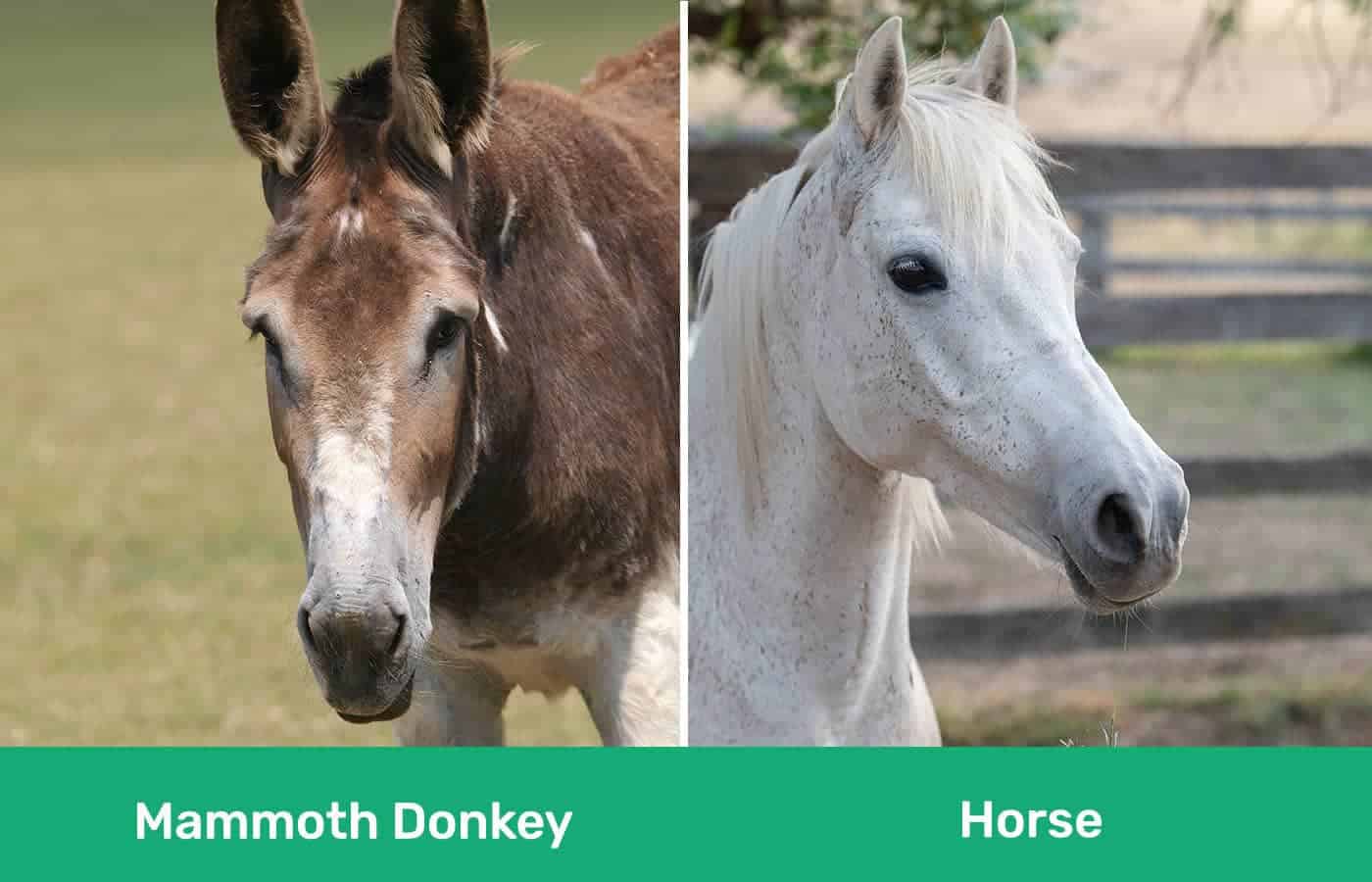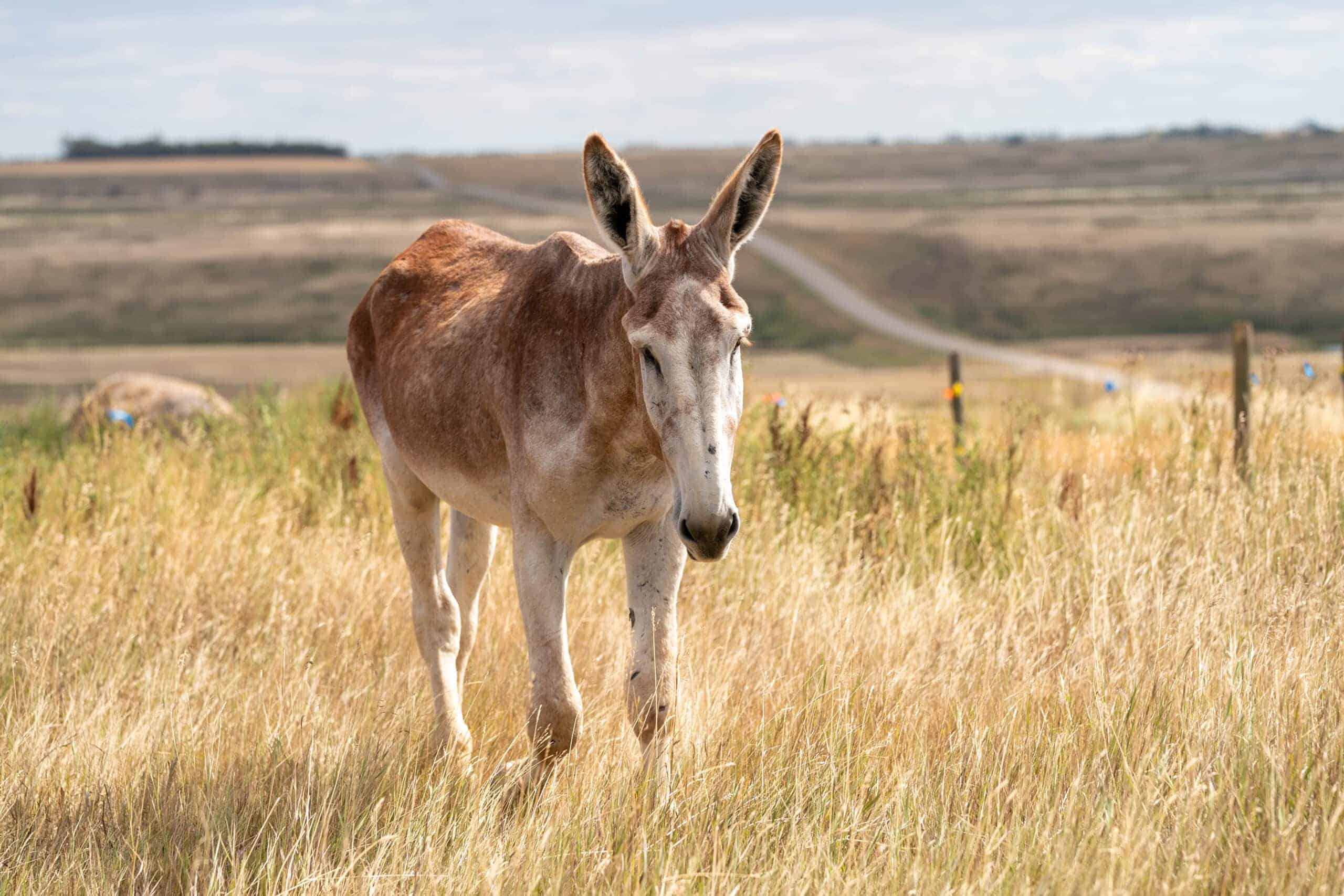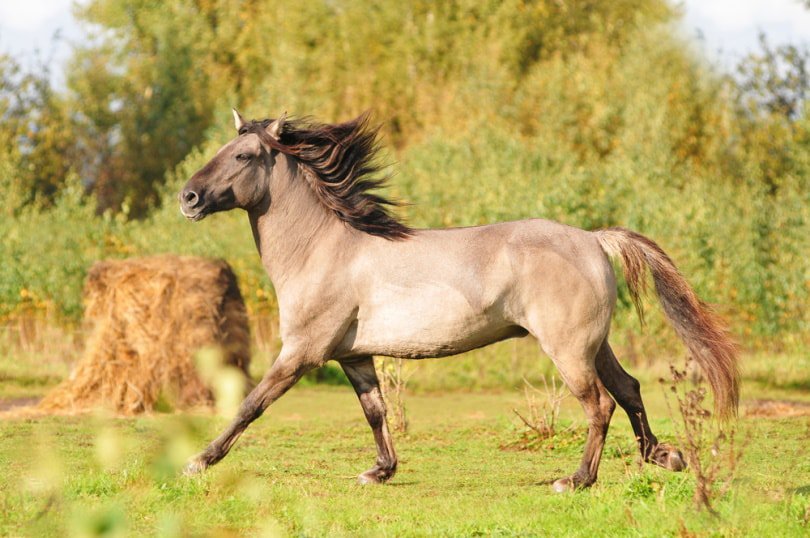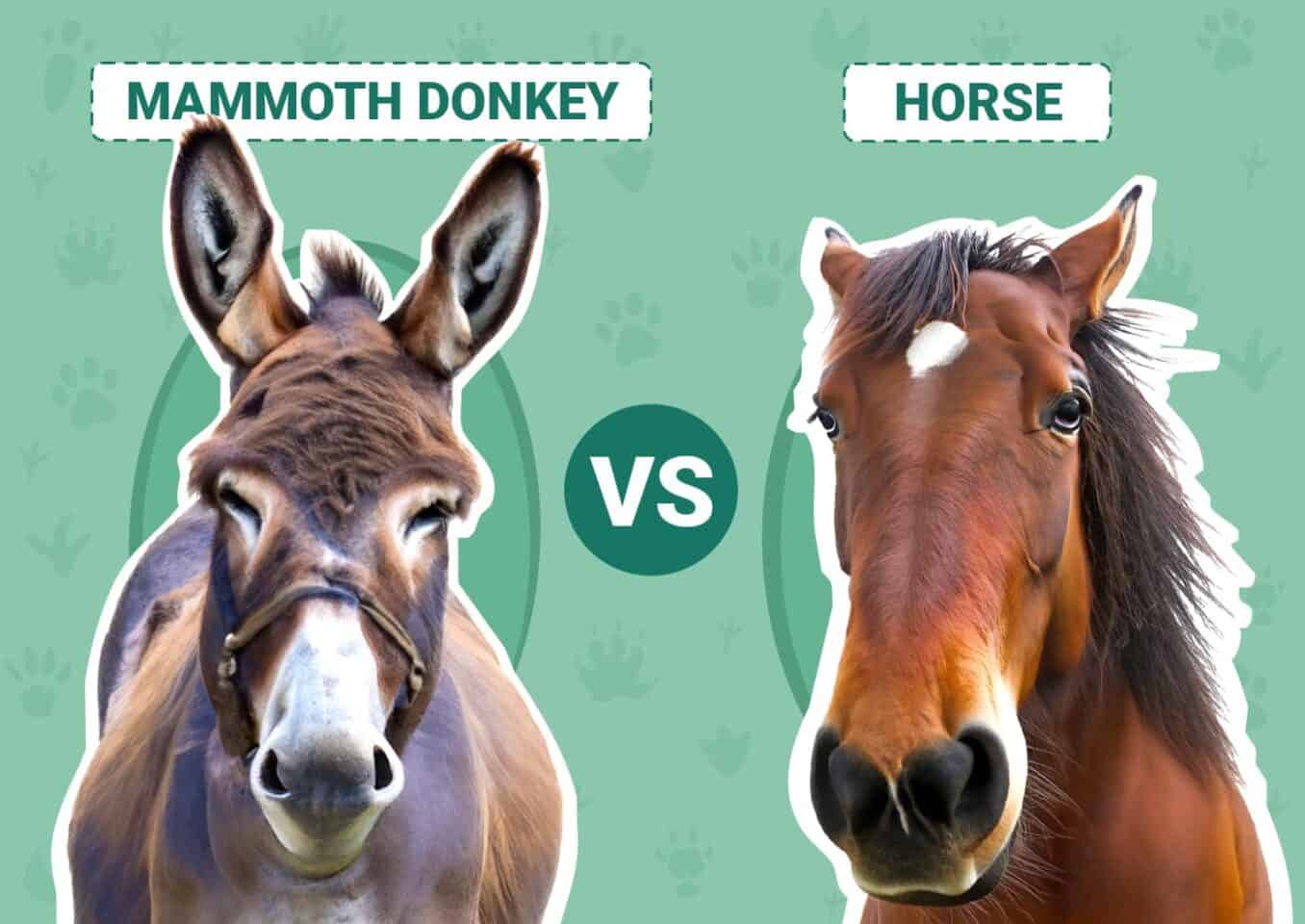You may have seen giant donkeys rivaling horses and wondered if they’re just the same thing. After all, mammoth donkeys appear just like donkey-faced horses and are used for work purposes too.
Despite the similarities, mammoth donkeys and horses have some major differences that make them suitable for different uses. Let’s check out some key facts and differences between these two breeds.
Click to Skip Ahead:

Visual Differences

At a Glance
- Origin: Egypt
- Size: 14 hands
- Lifespan: 30–50 years
- Domesticated?: Yes
- Origin: Western parts of the Eurasian Steppe
- Size: 13–17 hands
- Lifespan: 25–30 years
- Domesticated?: Yes

Mammoth Donkey Overview

Characteristics & Appearance
American Mammoth Jackstock, also known as Mammoth Donkeys, were once bred by George Washington and Henry Clay in 1785. The breed was developed by meticulously combining Spanish Jack, Maltese, Poitou, Catalonian, and other large jack stock. The goal of creating such large, big-boned donkeys was to breed strong mules for agricultural purposes.
You can identify mammoth donkeys by their chocolate or dark brown coat, with common variations being white fur around the muzzle and belly. Most mammoth donkeys stand at around 14 hands, or 56 inches, tall but the tallest ever recorded was a male donkey named Romulus—he stands at 68 inches tall! However, most mammoth donkeys are still noticeably shorter than the average horse.
Donkeys have a much different temperament from horses. They tend to stop and evaluate situations before taking action, which has earned them a reputation for stubbornness. They’re actually a fair bit smarter than horses, and fully trainable under most circumstances. This means donkeys are less flighty, too.
Uses
Mammoth donkeys have been used for agricultural work since ancient Egypt, where they were respected as intelligent workhorses. Their reputation has suffered a lot since then, but donkeys are still the ride of choice for many poor people in developing nations. They have more endurance than horses and their steady, plodding attitude makes them vital companions.
Mammoth donkeys are also used as riding and draft horses. That’s right—donkeys can compete in equestrian sports! They compete at a level similar to smaller horses and acquit themselves admirably at events. Aside from that, mammoth donkeys are valued for breeding large work mules. Mules are a useful cross between donkeys and horses, faster than donkeys, but less picky about food and stabling than horses.
Finally, mammoth donkeys can be used as guard animals on properties to ward off coyotes, snakes, foxes, and other small predators. They’re a popular choice on farms, too.

Horse Overview

Characteristics & Appearance
There are only a handful of donkey breeds, but there are hundreds of recognized horse breeds around the world. Some are used as workhorses, while others are bred for speed.
Horses have a lot more variation in color than mammoth donkeys, which largely look the same. You have miniature, furry Shetland ponies, medium-sized breeds, and giant horse breeds, like the British Shire.
Horses are beloved for being easy to train, but they have a very flighty temperament. That’s not even getting into the ridiculous amount of food they eat and how picky they are about clean stables. Horses are more trusting than donkeys, though, which makes them great companion animals and work animals.
Uses
Horses have been used around the world for racing, war, work, milk, and more since they were domesticated. They can tolerate cold and wet conditions very well but need somewhere warm and dry to recover.
Racehorses have been repeatedly trained, bred, and competed for as long as the B.C era when Greek gladiators competed in chariot races during the early Olympic Games. For thousands of years, animals like horses were the primary mode of transport for humanity. Only after the invention of the automobile did our relationship with horses change.
Now, horses are largely used to ride or do farm work, perhaps kept as companion pets. Equestrian show horses and draft racehorses also make up a fair chunk of the horse market worldwide. Horse lineage is serious business, and some horses have a recorded lineage from hundreds of years ago.

What Are the Differences Between Mammoth Donkeys and Horses?
Horses and mammoth donkeys can both be used for farm work or riding, but their key differences lie in their behavior, DNA, and physical appearance. Let’s delve into more detail about those below.
Behavior
Horses spook at any perceived threat, even though they’re more easily trained than donkeys. Mammoth donkeys are more steady companions and less trusting, preferring to assess risks for themselves before acting. This attitude and willingness to carry cargo without complaint have earned them a place in the hearts of mountaineers and poor villagers everywhere.
Horses are better for casual riding but require lots of pasture to roam and a warm, dry stable. Donkeys have more modest food and lodging requirements. Mammoth donkeys are great guard animals and companions and are even able to fight and even kill coyotes.
DNA
Horses have 64 chromosome pairs, while donkeys only have 62. If you breed the two together, you’ll get a mule with 63 chromosome pairs. In the case of a mammoth donkey, the mule would be about as large as a smallish horse. However, mules are sterile and can’t reproduce. Hinnies are similar but distinct— those are the offspring of a male horse and a female donkey.

Which Breed Is Right for You?
Mammoth donkeys are the most versatile thanks to their size, serving as riding, companion, work, and guard animals alike. Horses are typically kept for riding or as companions, with some as working horses. Mammoth donkeys will require more work to train, whereas horses are more straightforward and cooperative.
However, a mammoth donkey will make an excellent guard animal if you have livestock. They don’t do so well with dogs but make great companions for horses and other donkeys. Expect to spend more time and money on a horse than a donkey because of their upkeep and feeding requirements.
Featured Image Credit: (L) Tracy Kerestesh, Shutterstock | (R) Rebecca Scholz, Pixabay
